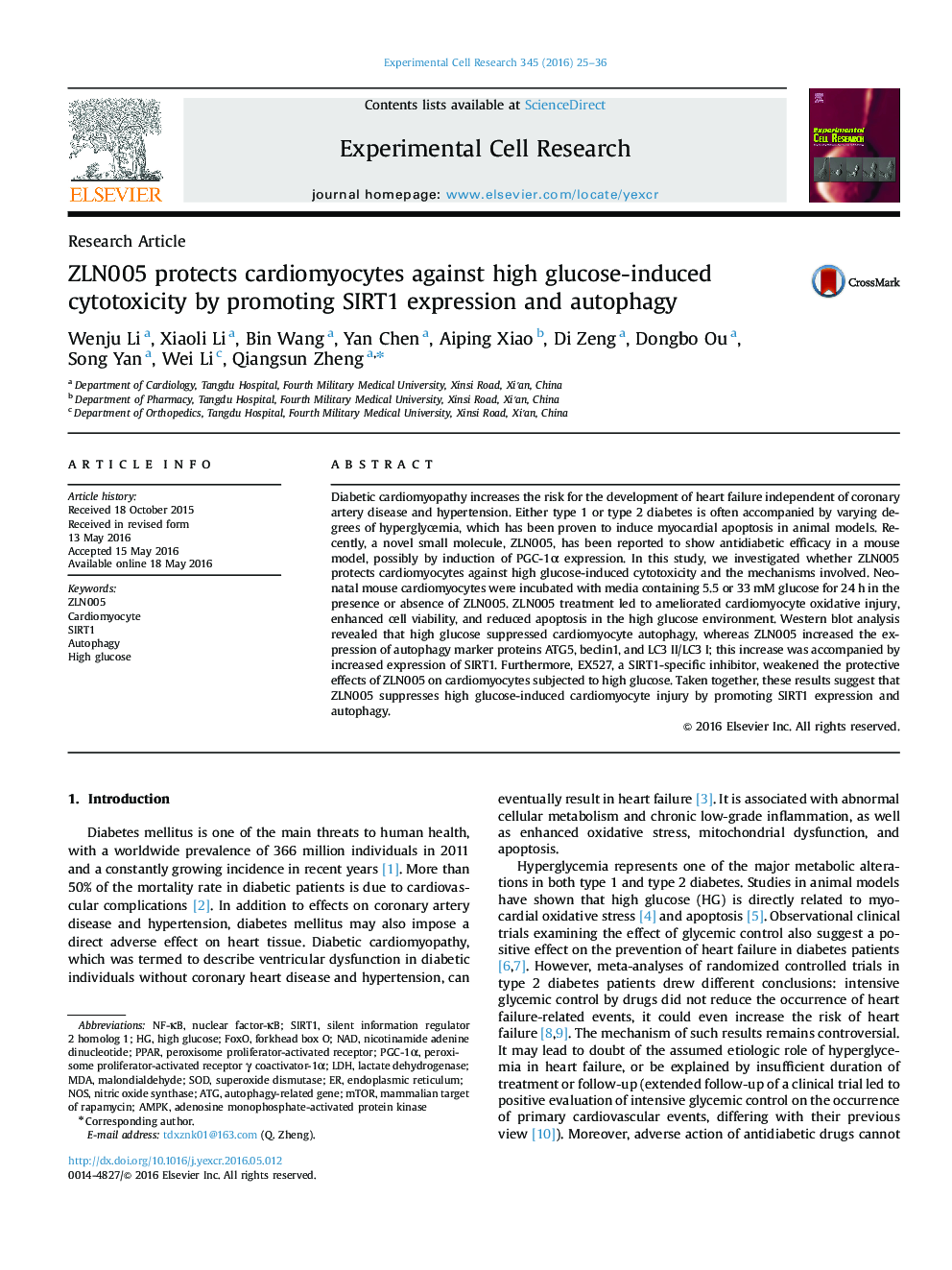| Article ID | Journal | Published Year | Pages | File Type |
|---|---|---|---|---|
| 2129960 | Experimental Cell Research | 2016 | 12 Pages |
•ZLN005 protects neonatal cardiomyocytes from high glucose-induced cell injury.•ZLN005 promotes SIRT1 expression in cardiomyocytes under normal and high glucose conditions.•ZLN005 restores high glucose-suppressed autophagy via a SIRT1-mediated pathway.
Diabetic cardiomyopathy increases the risk for the development of heart failure independent of coronary artery disease and hypertension. Either type 1 or type 2 diabetes is often accompanied by varying degrees of hyperglycemia, which has been proven to induce myocardial apoptosis in animal models. Recently, a novel small molecule, ZLN005, has been reported to show antidiabetic efficacy in a mouse model, possibly by induction of PGC-1α expression. In this study, we investigated whether ZLN005 protects cardiomyocytes against high glucose-induced cytotoxicity and the mechanisms involved. Neonatal mouse cardiomyocytes were incubated with media containing 5.5 or 33 mM glucose for 24 h in the presence or absence of ZLN005. ZLN005 treatment led to ameliorated cardiomyocyte oxidative injury, enhanced cell viability, and reduced apoptosis in the high glucose environment. Western blot analysis revealed that high glucose suppressed cardiomyocyte autophagy, whereas ZLN005 increased the expression of autophagy marker proteins ATG5, beclin1, and LC3 II/LC3 I; this increase was accompanied by increased expression of SIRT1. Furthermore, EX527, a SIRT1-specific inhibitor, weakened the protective effects of ZLN005 on cardiomyocytes subjected to high glucose. Taken together, these results suggest that ZLN005 suppresses high glucose-induced cardiomyocyte injury by promoting SIRT1 expression and autophagy.
